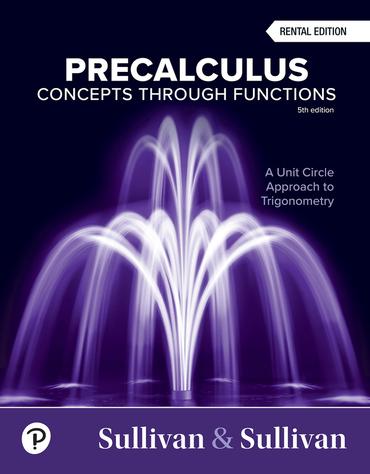In applications, the symbols used for the independent and dependent variables are often based on common usage.
Question:
In applications, the symbols used for the independent and dependent variables are often based on common usage. So, rather than using y = f (x) to represent a function, an applied problem might use C = C(q) to represent the cost C of manufacturing q units of a good. Because of this, the inverse notation f −1 used in a pure mathematics problem is not used when finding inverses of applied problems. Rather, the inverse of a function such as C = C(q) will be q = q(C). So C = C(q) is a function that represents the cost C as a function of the number q of units manufactured, and q = q(C) is a function that represents the number q as a function of the cost C.
The function T(g) = 2055 + 0.12( g − 20,550) represents the 2022 federal income tax T (in dollars) due for a “married filing jointly” filer whose modified adjusted gross income is g dollars, where 20,550 < g 83,550.
(a) What is the domain of the function T?
(b) Given that the tax due T is an increasing linear function of modified adjusted gross income g, find the range of the function T.
(c) Find adjusted gross income g as a function of federal income tax T. What are the domain and the range of this function?
Step by Step Answer:

Precalculus Concepts Through Functions A Unit Circle Approach To Trigonometry
ISBN: 9780137945139
5th Edition
Authors: Michael Sullivan





